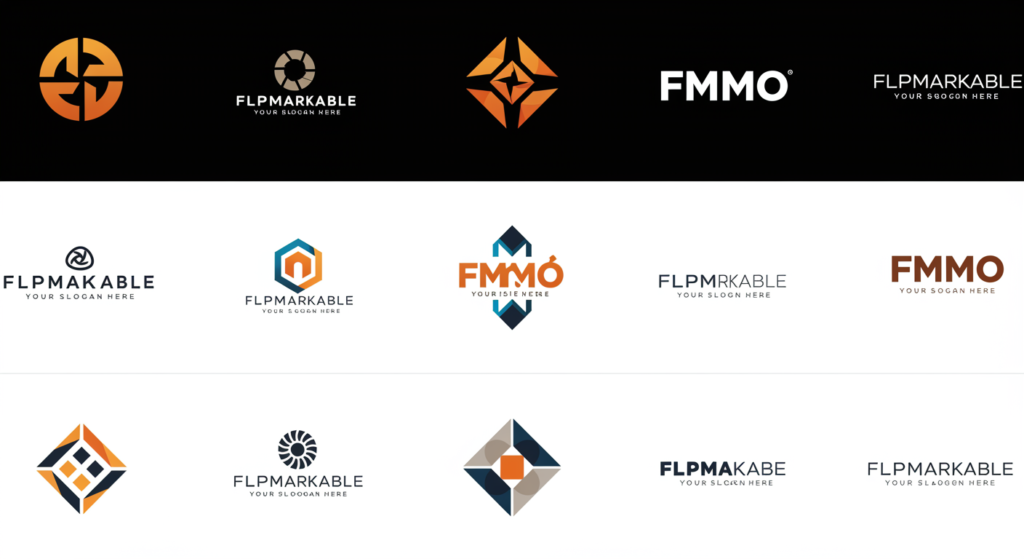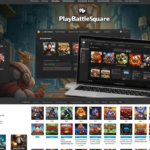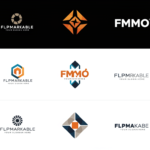Introduction
In today’s hypercompetitive marketplace, the term logos flpmarkable is emerging as a defining concept in brand design. More than just an eye-catching logo, a “flpmarkable” logo represents the perfect balance of flexibility and memorability—two traits essential for success in the modern digital landscape. Businesses are no longer content with static symbols; they seek dynamic brand marks that adapt to different media, connect emotionally, and tell a story. This is where the logos flpmarkable philosophy takes center stage.
At its core, a logos flpmarkable design system combines visual versatility with brand authenticity. It’s not about simply designing a logo; it’s about crafting a scalable visual ecosystem that communicates meaning across platforms—from a smartphone screen to a billboard. Consumers today encounter brands in fragmented digital spaces: social media, apps, websites, and physical packaging. A flpmarkable logo ensures consistency while remaining agile enough to evolve.
As companies rethink how they communicate visually, the logos flpmarkable approach offers a blueprint for designing identities that endure. It’s an intersection of psychology, design, and marketing—creating an emblem that doesn’t just identify but resonates. This article explores what makes logos flpmarkable such a powerful branding concept, how it can be achieved, and why it’s changing how businesses build trust and recognition in a fast-paced digital world.
What Does “Logos Flpmarkable” Really Mean?
At first glance, the phrase logos flpmarkable might sound like industry jargon, but its essence is simple and strategic. “Flpmarkable” is derived from the fusion of “flexible” and “remarkable”—a design philosophy that urges brands to create logos that can adapt while maintaining distinctiveness. This means a flpmarkable logo works seamlessly in multiple contexts without losing its core identity. For example, the Nike swoosh remains recognizable whether it’s embossed on a shoe or minimized on an app icon. That adaptability is the foundation of a flpmarkable identity.
Beyond mere versatility, the concept also embraces memorability. A logo that shifts shape but stays anchored to a unique idea or color palette becomes etched in public memory. Consider Google’s evolving doodles—playful yet consistent with its visual DNA. This balance of fluidity and familiarity defines logos flpmarkable. It ensures that a brand’s presence feels alive, responsive, and unmistakable. The goal isn’t to follow fleeting trends but to design for longevity in a constantly changing digital world.
The Importance of Flexibility in Modern Branding
A flpmarkable logo thrives on its ability to adjust across diverse formats and technologies. In an era where digital touchpoints multiply daily, rigid designs can quickly appear outdated. Brands must adapt their visuals to various screen sizes, cultural nuances, and marketing channels. For instance, adaptive logo systems—like Airbnb’s Bélo symbol or Mastercard’s simplified circles—show how flexibility fosters clarity across devices. A truly flpmarkable logo maintains integrity whether it’s viewed in high resolution on a 4K display or printed on a minimal business card.
Flexibility also extends to campaign adaptability. As brands engage audiences through motion graphics, augmented reality, and social platforms, logos must breathe life into every interaction. A static emblem limits storytelling potential, but a flpmarkable logo evolves with the brand narrative. When consumers experience consistent yet dynamic visuals, trust and recognition strengthen. This adaptability is not just aesthetic—it’s strategic branding that future-proofs a company’s identity in a constantly evolving market.
Why Memorability Drives Market Impact
While flexibility keeps a brand agile, memorability anchors it in the consumer’s mind. A logos flpmarkable system ensures the logo doesn’t just look good—it sticks. Neuroscience studies show that humans recall visuals faster than text, meaning a well-designed logo can shape purchasing behavior and loyalty. Think of Apple’s bitten apple or McDonald’s golden arches. These designs are not only simple and consistent but evoke emotion, making them both familiar and aspirational.
Memorability also enhances word-of-mouth marketing. When customers can easily recall and describe a logo, they effectively become brand ambassadors. A flpmarkable logo achieves this by maintaining identifiable visual cues—color, shape, or typography—across all applications. Even subtle design changes maintain coherence. This deliberate consistency ensures that as a brand expands globally, its image remains instantly recognizable, cementing its place in cultural memory.
The Psychology Behind Logos Flpmarkable
The science of logos flpmarkable goes beyond aesthetics; it taps into how people perceive and connect emotionally. Cognitive psychology explains that humans are drawn to patterns, symmetry, and color contrast—all crucial elements of memorable design. A flpmarkable logo leverages these psychological triggers while allowing enough variation to feel fresh and relevant. For example, brands that use modular logo systems—like MTV’s iconic transformations—stimulate curiosity and engagement without confusing the audience.
Moreover, emotional resonance plays a key role. Consumers associate visual cues with feelings—trust, excitement, comfort, or innovation. A flpmarkable logo harnesses this power through deliberate design choices. Rounded shapes suggest friendliness, while bold lines imply strength. By combining these insights, brands can craft flexible marks that still evoke consistent emotions. This psychological consistency makes a logo more than a graphic—it becomes an experience that connects deeply with its audience.
Creating a Logos Flpmarkable System: Key Elements
Designing a logos flpmarkable identity involves strategic balance. First, consistency in core elements—such as color palette, typography, and proportions—anchors the brand’s personality. Second, modular flexibility allows variation without losing cohesion. For instance, Coca-Cola’s wordmark remains consistent, but its contextual adaptations (holiday editions, sustainability campaigns) feel refreshed and timely. This balance between unity and evolution defines a flpmarkable system’s strength.
Technology also enhances this adaptability. Advanced design software enables variable logos that react to data, time of day, or audience segment. Brands like Spotify use dynamic identities that adjust visually to user behavior—perfect examples of flpmarkable design in action. This synthesis of creativity and tech-driven personalization ensures the logo remains relevant, memorable, and emotionally connected no matter how or where it appears.
Common Mistakes to Avoid in Flpmarkable Logo Design
Despite its appeal, many brands misinterpret the flpmarkable concept, leading to inconsistency. A frequent error is overcomplicating the design—adding too many variations or details. This dilutes recognition and confuses audiences. A truly flpmarkable logo evolves gracefully, not chaotically. Simplicity remains key. Minimalist designs tend to scale better, translate across cultures, and maintain brand clarity. When in doubt, less is often more.
Another common pitfall is ignoring emotional coherence. A flexible logo should never lose its emotional signature. Changing colors or shapes too drastically can alienate loyal customers. Instead, evolution should feel intentional and natural, preserving familiarity while introducing novelty. Testing design variations with real audiences helps ensure the logo remains both flexible and emotionally consistent—a hallmark of successful logos flpmarkable design.
Case Studies: Brands That Embody Logos Flpmarkable
Several leading brands demonstrate the power of logos flpmarkable principles. One standout example is Google. Its logo variations celebrate global events through interactive doodles without compromising brand identity. Similarly, Netflix’s responsive logo animation adjusts seamlessly to different screens and content formats, reinforcing recognition. These brands prove that flexibility and memorability can coexist without sacrificing brand coherence.
Smaller brands are also adopting the flpmarkable approach. Boutique fashion labels and tech startups use adaptive logo kits that shift tone and color based on context—social media, packaging, or advertising. This dynamic visual storytelling keeps audiences engaged. The result? A consistent yet evolving identity that feels human, modern, and distinct—everything a flpmarkable logo aims to achieve.
Conclusion: The Future of Logos Flpmarkable
As branding enters an age of personalization and constant change, logos flpmarkable represents the next frontier of visual identity. It acknowledges that brands must be both timeless and adaptive, memorable yet versatile. A flpmarkable logo becomes a living system—one that can grow, respond, and remain meaningful as markets shift and technology advances.
For businesses seeking lasting impact, embracing the flpmarkable philosophy isn’t just a design choice—it’s a strategic imperative. By blending flexibility, memorability, and emotional resonance, brands can craft logos that transcend trends and foster enduring loyalty. The future belongs to those who design not only for recognition but for evolution—where every mark made is, truly, flpmarkable.







